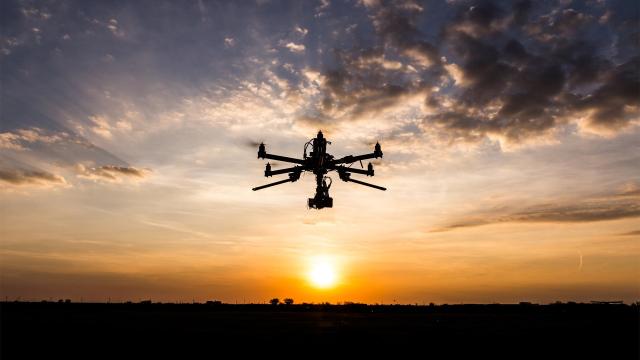New UAVS specialize in detecting enemy air defense systems
Planes and helicopters will now be protected by artificial intelligence drones. A high-tech unmanned reconnaissance system has been tested in the Ground forces. The new model specializes in detecting the operation of air defense radars and anti-aircraft missile systems, sources in the defense Department said. The device not only finds the target's radio-electronic radiation, but also determines its location, as well as tactical and technical characteristics. The reconnaissance drone, according to experts, should save the Russian combat aviation from serious losses.
Agent against air defense
As sources in the military Department told Izvestia, the latest unmanned intelligence system was tested in the southern military district. In particular, it participated in the strategic exercises "Caucasus-2020". The small-sized device itself is almost invisible to enemy radars. Software with elements of artificial intelligence and high automation of the search process allow it to assess the situation and find targets in the shortest possible time, sources in the Ministry of defense told Izvestia.
The drone detects radiation from radar stations, each of which has its own characteristics and features. It is also able to determine the direction of the signal source, its approximate range and coordinates. Information from the UAV about identified targets can be transmitted not only to the control center, but also directly broadcast directly to the aircraft or helicopter, warning them of the danger.
Unlike ground-based radio reconnaissance, air-based ones are more mobile. They can be quickly moved to the right place. Now such tasks are performed by manned Il-22PP "Porubschik" aircraft. The use of drones to detect air defense systems allows you not to endanger people.
If earlier in military conflicts, gaining air supremacy was of paramount importance, today the task of destroying the air defense system is one of the first places, former commander of the 4th army of the air force and air defense, Lieutenant General Valery Gorbenko, told Izvestia. New devices, in his opinion, will be very useful here.
— This is a serious invention, and if it justifies its characteristics, it will change a lot, - said the expert. — It will be possible to immediately strike at systems that threaten aircraft in this direction. This will save the lives of the crews, and combat vehicles will be able to effectively perform their tasks. When striking targets, an air defense suppression group is assigned. It must hit air defense systems.
Valery Gorbenko noted that the use of unmanned aircraft has become one of the most important factors in the recent fighting in Nagorno-Karabakh.
— There are very effectively worked by the Turkish drones. And the air defense system of the Armenian side turned out to be weak, " the expert concluded.
TEXT message from the drone
The Russian military already has a serial drone engaged in electronic warfare. The Leer-3 complex is based on the modified Orlan-10 reconnaissance UAV, which is widely used in the military. Light devices weighing 18 kg are designed for jamming cellular communications. In addition, they can also act as a base station by sending SMS messages to all phones in their area of operation.
According to the Ministry of defense, the initial version of "Leer-3" could block the regular operation of up to two thousand GSM phones within a radius of six kilometers. It was also reported that the complex was upgraded in order to be effective against other mobile communication standards and frequencies.
These devices also have elements of radio intelligence. "Leer-3" is used to find places where cell phones are crowded and determine their location. The detected coordinates are transmitted to the automated combat control system and they can be quickly attacked by artillery or aircraft.
Such a drone can stay in the air for up to ten hours and operate at a distance of up to 120 km from the control vehicle. It is built on the KAMAZ-5350 chassis, which allows you to move on highways and rough terrain. For takeoff and landing, the "Eagles" do not need an airfield. The UAV is launched from a light prefabricated catapult carried in the same vehicle. They return to earth under a parachute.
Swarms of drones
Modern UAVS have been mass-supplied to the Russian army since 2013. By the end of 2019, the Ministry of defense reported that it is armed with more than two thousand reconnaissance drones. Most of them belong to the light class. In the Syrian operation, according to the military Department, up to 70 domestic drones were used simultaneously.
Today, every brigade or division of the ground forces has a UAV company. They also saturate the airborne troops. UAV units are assigned to artillery and missile brigades to adjust fire and target designation. Paratroopers and Marines have their own arsenals of drones. The only UAV regiment in Russia is part of the Northern fleet. Drones are also based on some of the most modern examples of warships.
Since this year, the Armed forces have also received reconnaissance and strike "Orions" developed by the Kronstadt company. The manufacturer handed over the first set of three devices for experimental military operation in April of this year. After improvements based on the results of use, it is planned to launch the first Russian Udarnik for mass production in December. A machine weighing about a ton can use a large set of light guided ammunition designed specifically for it.
The development of even more lifting drones-Altius and s-70 Hunter bombers with a take-off weight of 6 and 20 tons is underway. They will be able to use a much larger set of ammunition and equipment, including intelligence.
Anton Lavrov

